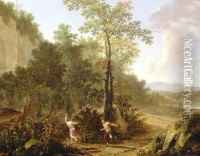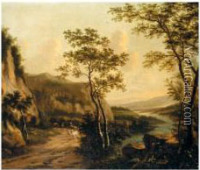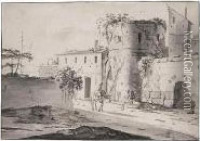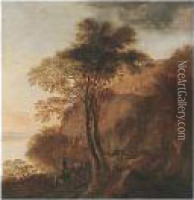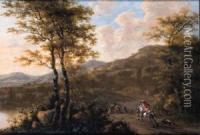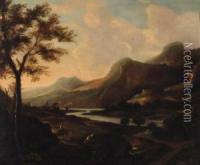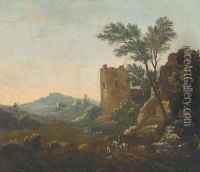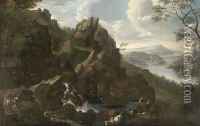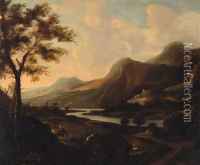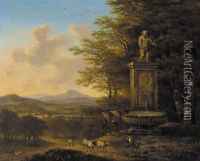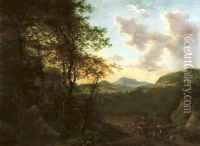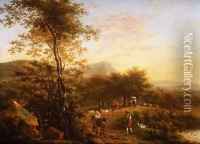Willem de Heusch Paintings
Willem de Heusch was a Dutch painter and etcher who was born in Utrecht in 1625. He was known for his Italianate landscapes, which were influenced by the work of artists from the Dutch Golden Age who had traveled to Italy and brought back a style that incorporated Italian scenery and classical ruins into their work.
De Heusch was the nephew of the more famous Dutch landscape painter Jan Baptist Weenix, under whom he likely studied. Willem de Heusch's works are characterized by their detailed depiction of natural and architectural elements, often bathed in a warm, golden light reminiscent of the Italian countryside. He was skilled in portraying the textures of stone and foliage, and his compositions often included figures and animals to add life and narrative to his scenes.
During his career, de Heusch became a member of the Utrecht Guild of Saint Luke, a city guild for painters, and he was active primarily in his hometown. His work was appreciated during his lifetime, and he sold his paintings to patrons both in the Netherlands and abroad.
De Heusch's etchings also contributed to his reputation as they were widely collected. Like his paintings, his prints often depicted landscapes with ruins and pastoral scenes. The etchings displayed his keen sense of detail and his ability to create depth and atmosphere.
Willem de Heusch's legacy is not as well-known as that of some of his contemporaries, partly due to the dominance of other landscape artists of the period. However, his works are still considered valuable examples of the Italianate landscape genre in Dutch art. He continued to work and influence other artists until his death in 1692. Today, de Heusch's paintings can be found in various art collections and museums, where they are recognized for their contribution to the Dutch landscape tradition.
